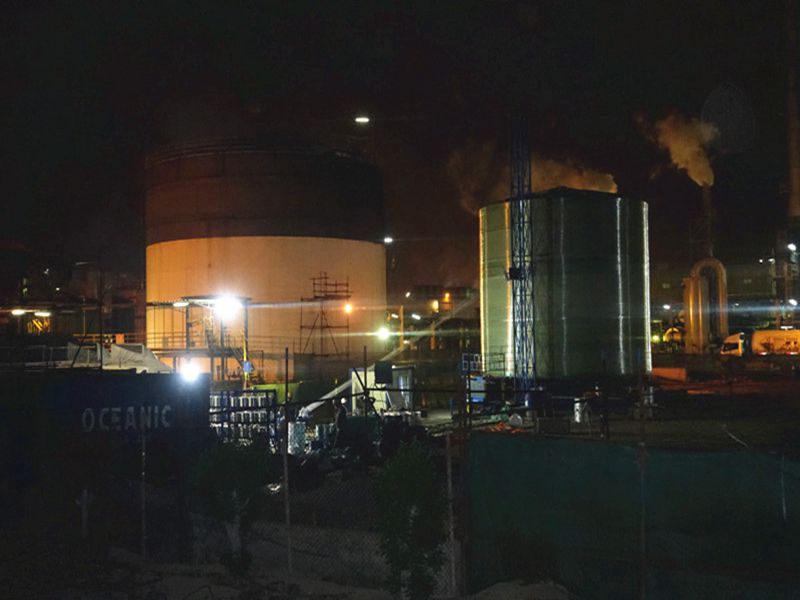Exploring the Key Steps for Implementing FRP in Construction Projects
Understanding FRP Steps A Comprehensive Guide
Fiber Reinforced Polymer (FRP) is a composite material made of a polymer matrix reinforced with fibers. This technology has gained immense traction in various industrial applications due to its excellent strength-to-weight ratio, corrosion resistance, and versatility. The manufacturing and application of FRP involve several critical steps, each crucial for ensuring the final product meets specific requirements. In this article, we will delve into the essential stages of FRP processing and how they contribute to the effective use of this remarkable material.
Step 1 Material Selection
The first step in the FRP manufacturing process is selecting the appropriate materials. FRP typically consists of two main components the polymer matrix and the reinforcing fibers. The polymer is often chosen based on its chemical resistance, thermal stability, and mechanical properties. Common polymers used in FRP include epoxy, polyester, and vinyl ester. The reinforcing fibers can be glass, carbon, or aramid, each offering different benefits. Glass fibers are cost-effective and provide excellent mechanical properties, while carbon fibers are known for their lightweight characteristics and high strength.
Step 2 Designing the Composite Structure
Once the materials are selected, the next step involves designing the composite structure. This phase requires engineers and designers to create a detailed plan that outlines the shape, dimensions, and layering of the materials. The design must consider the application environment, anticipated loads, and performance requirements. Advanced Computer-Aided Design (CAD) software is often employed to simulate the behavior of the FRP under various conditions, helping to optimize the design before proceeding to production.
Step 3 Fabrication Techniques
The fabrication of FRP can be accomplished through several methods, each suitable for different applications. Common techniques include
1. Hand Lay-up This process involves manually placing layers of reinforcement and resin, which are then compacted to remove air pockets. Hand lay-up is suitable for small-scale production and complex shapes.
2. Spray-Up In this method, chopped fibers and resin are simultaneously sprayed onto a mold. This technique allows for faster production times and is ideal for larger components.
3. Vapor Infusion A more advanced technique where a vacuum is applied to draw resin into the fibers, ensuring even saturation and minimizing waste.
frp step

4. Filament Winding This is used primarily for cylindrical products, where continuous fibers are wound around a mandrel coated with resin.
Selecting the right fabrication technique is crucial, as it affects the quality, cost, and performance characteristics of the final FRP component.
Step 4 Curing Process
After the FRP is fabricated, it undergoes a curing process. Curing is the chemical reaction that solidifies the polymer, enhancing its mechanical properties and durability. Depending on the type of resin used, curing can occur at room temperature or may require elevated temperatures. The curing time can vary significantly, impacting production schedules and lead times. Proper curing is vital, as insufficiently cured FRP can lead to structural weaknesses and premature failure.
Step 5 Quality Control
Quality assurance is a fundamental step in FRP production. This involves rigorous testing and inspection of the finished products to ensure they meet specified standards. Various non-destructive testing methods, such as ultrasonic testing, are employed to detect any internal defects. Additionally, mechanical tests, including tensile, flexural, and impact tests, ensure the material’s performance aligns with design expectations.
Step 6 Finishing and Application
The final step involves finishing touches, such as sanding, painting, or applying protective coatings, to enhance the aesthetic appeal and durability of the FRP product. Once completed, the FRP components can be installed and utilized across various applications, ranging from construction to automotive and aerospace industries.
Conclusion
The steps involved in the production of Fiber Reinforced Polymer, from material selection to finishing, play a crucial role in determining the performance and suitability of FRP for various applications. Understanding these steps not only allows manufacturers to optimize their processes but also helps engineers and designers make informed decisions when working with this versatile material. With continued advancements in technology and materials science, the potential for FRP in future applications remains vast and promising.
Latest news
-
Oblate Tanks: Space-Saving, Durable Liquid Storage SolutionsNewsAug.27,2025
-
High-Performance Piping System Solutions for Industry & Commercial UseNewsAug.26,2025
-
Precision Fittings: Durable & Reliable Industrial & Plumbing SolutionsNewsAug.25,2025
-
Practical Steps: Unlock Success with Our Proven GuidesNewsAug.24,2025
-
Transport Tanks: Safe, Durable & Efficient Liquid HaulingNewsAug.23,2025
-
High-Quality Piping Systems for Efficient Flow & DurabilityNewsAug.22,2025











